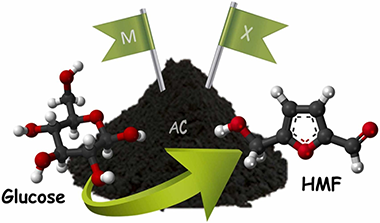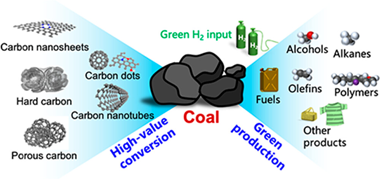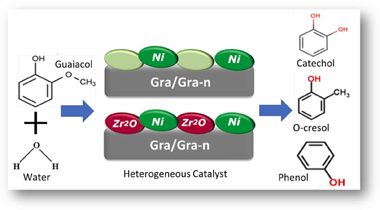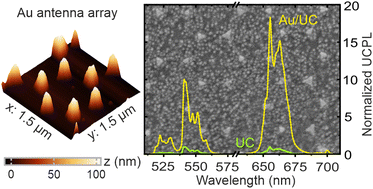Artículos SCI
2023
2023
Química de Superficies y Catálisis
Glucose dehydration reaction over metal halides supported on activated charcoal catalysts
Martin, Gabriel Delgado; Lara, Beatriz; Bounoukta, Charf Eddine; Domínguez, María Isabel; Ammari, Fatima; Ivanova, Svetlana; Centeno, Miguel ÁngelCatalysis Today, 423 (2023) 114012
Show abstract ▽

Different metal halide catalysts supported on a commercial active charcoal have been synthesized, activated, characterized and tested in glucose dehydration to 5-hydroxymethylfurfural using a biphasic water/methyl isobutyl ketone media. The influence of the cation nature (K+, Ca2+, Sr2+, Mg2+) and anion nature (F-, Cl-, Br-) on the catalytic performance of the solid is discussed in terms of glucose conversion, HMF yield and products selectivity. The activation of the impregnated catalysts results in a great diversity of active sites, such as Bronsted sites (carboxylic groups), basic sites (metal oxide), and Lewis acid site (Mn+). Their distribution within the samples determinates the resulting products and the final HMF yield.
Noviembre, 2023 | DOI: 10.1016/j.cattod.2023.01.019
Química de Superficies y Catálisis
Coal Chemistry Industry: From Production of Liquid Fuels to Fine Chemicals to Carbon Materials
Zhang, YY; Li, HT; Reina, TR; Liu, JEnergy & Fuels, (2023)
Show abstract ▽

Coal resources are one of the key energy sources and essential for modern economic development. Despite the traditional coal industries having made considerable contributions to chemical production and energy storage, the accompanying environmental pollution and high energy consumption have also arisen that cause significant influence of the ecological balance. Hence, there is an urgent need to exploit feasible approaches to the sustainable utilization of coal resources. This review begins with a comprehensive summary of the representative coal chemistry technologies with critical discussions. Subsequently, a novel strategy coupled with green hydrogen is discussed for sustainable conversion of coal and highly efficient manufacture of downstream products. Moreover, the unique role of coal in terms of high-value-added carbon material production is highlighted as a low-cost resource for distinct applications. Finally, we propose several future directions for advanced coal chemistry development.
Noviembre, 2023 | DOI: 10.1021/acs.energyfuels.3c02661
Nanotecnología en Superficies y Plasma
H2 Production from NH3 in a BaTiO3 Moderated Ferroelectric Packed-Bed Plasma Reactor
Ruiz-Martín, M; Marin-Meana, S; Megías-Sánchez, A; Oliva-Ramírez, M; Cotrino, J; González-Elipe, AR; Gómez-Ramírez, AP.asma Chemistry and Plasma Processing, 43 (2023) 2093-2110
Show abstract ▽
Plasma decomposition reactions are used for various gas phase chemical processes including the decomposition of ammonia. In this work we show that pure ammonia can be effectively decomposed at atmospheric pressure and ambient temperature using a packed-bed plasma reactor moderated with BaTiO3 ferroelectric pellets without catalyst. The decomposition rate and energy efficiency of this ferroelectric barrier discharge reactor have been monitored as a function of applied voltage (up to a maximum value of 2.5 kV) and flow rate. For each operating condition reaction efficiencies have been correlated with the parameters defining the electrical response of the reactor. It is found that plasma current and volume inside the reactor and hence the energy efficiency of the process and the decomposition rate vary with the applied voltage and the flow of ammonia (a maximum decomposition rate of 14% and an energy efficiency of 150 LH2/kWh has been determined under optimized operation conditions). The role of back reactions (i.e. N2 + 3H2 → 2NH3) in decreasing reactor performance is another key effect affecting the overall efficiency for the ammonia decomposition. The possibilities of ferroelectric barrier discharge reactors to induce the decomposition of ammonia and the importance of keeping the operating temperature below the Curie temperature of the ferroelectric material are highlighted.
Noviembre, 2023 | DOI: 10.1007/s11090-023-10427-7
Química de Superficies y Catálisis
Multicomponent graphene based catalysts for guaiacol upgrading in hydrothermal conditions: Exploring "H2-free" alternatives for bio-compounds hydrodeoxygenation
Parrilla-Lahoz, S; Jin, W; Pastor-Perez, L; Duyar, MS; Martinez-Quintana, L; Dongil, AB; Reina, TRCatalysis Today, 422 (2023) 114235
Show abstract ▽

Catalytic hydrodeoxygenation (HDO) is a critical technique for upgrading biomass derivatives to deoxygenated fuels or other high-value compounds. Phenol, guaiacol, anisole, p-cresol, m-cresol and vanillin are all monomeric phenolics produced from lignin. Guaiacol is often utilised as a model lignin compound to deduce mechanistic information about the bio-oil upgrading process. Typically, a source of H2 is supplied as reactant for the HDO reaction. However, the H2 supply, due to the high cost of production and additional safety precautions needed for storage and transportation, imposes significant economic infeasibilities on the HDO process's scaling up. We investigated a novel H2-free hydrodeoxygenation (HDO) reaction of guaiacol at low temperatures and pressures, using water as both a reaction medium and hydrogen source. A variety of Ni catalysts supported on zirconia/ graphene/with/without nitrogen doping were synthesised and evaluated at 250 degrees C and 300 degrees C in a batch reactor, with the goal of performing a multi-step tandem reaction including water splitting followed by HDO. The catalysts were characterised using H2-TPR, XRD, TEM and XPS to better understand the physicochemical properties and their correlation with catalytic performance of the samples in the HDO process. Indeed, our NiZr2O/Gr-n present the best activity/selectivity balance and it is deemed as a promising catalyst to conduct the H2-free HDO reaction. The catalyst reached commendable conversion levels and selectivity to mono-oxygenated compounds considering the very challenging reaction conditions. This innovative HDO approach provides a new avenue for cost-effective biomass upgrading.
Noviembre, 2023 | DOI: 10.1016/j.cattod.2023.01.027
Materiales Ópticos Multifuncionales
Enhancement of upconversion photoluminescence in phosphor nanoparticle thin films using metallic nanoantennas fabricated by colloidal lithography
Ngo, TT; Viaña, JM; Romero, M; Calvo, ME; Lozano, G; Miguez, HMaterials Advances, 4 (2023) 6381-6388
Show abstract ▽

Lanthanide-doped upconversion nanoparticles (UCNPs), as multifunctional light sources, are finding utility in diverse applications ranging from biotechnology to light harvesting. However, the main challenge in realizing their full potential lies in achieving bright and efficient photon upconversion (UC). In this study, we present a novel approach to fabricate an array of gold nanoantennas arranged in a hexagonal lattice using a simple and inexpensive colloidal lithography technique, and demonstrate a significant enhancement of UC photoluminescence (UCPL) by up to 35-fold through plasmon-enhanced photoexcitation and emission. To elucidate the underlying physical mechanisms responsible for the observed UCPL enhancement, we provide a comprehensive theoretical and experimental characterization, including a detailed photophysical description and numerical simulations of the spatial electric field distribution. Our results shed light on the fundamental principles governing the enhanced UCNPs and pave the way for their potential applications in photonic devices.
Noviembre, 2023 | DOI: 10.1039/D3MA00775H
- ‹ anterior
- 8 of 410
- siguiente ›














